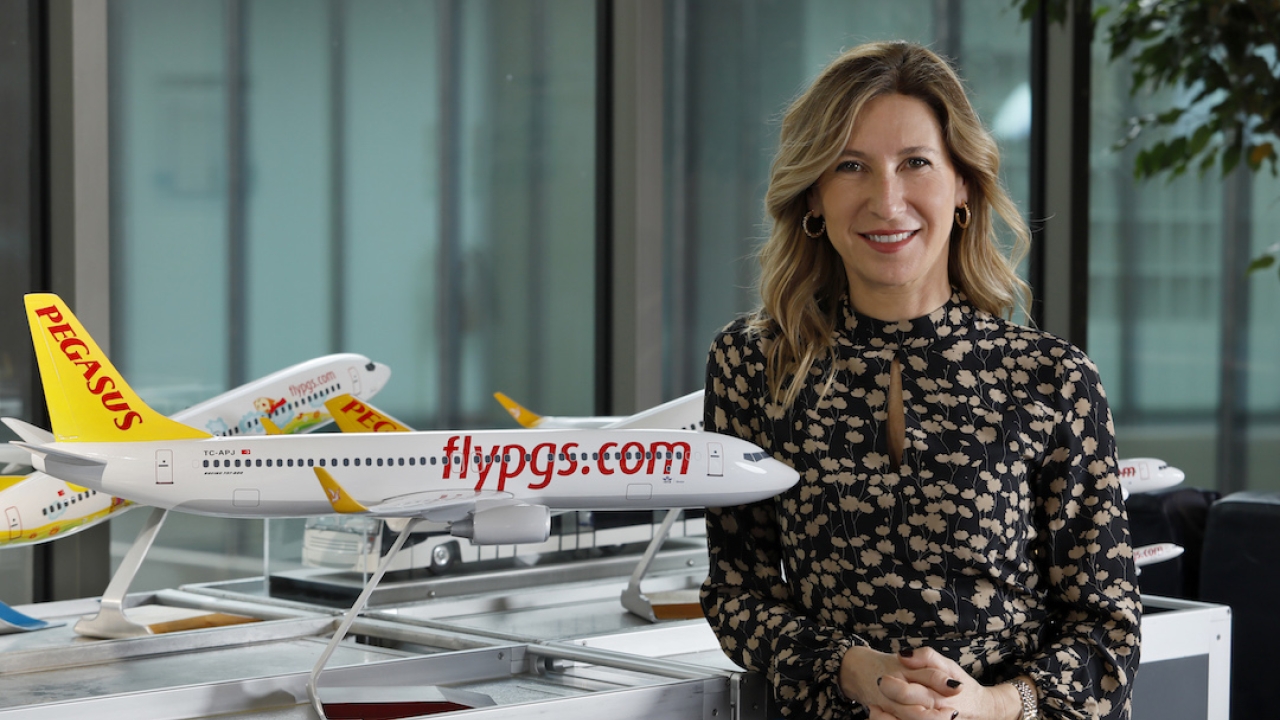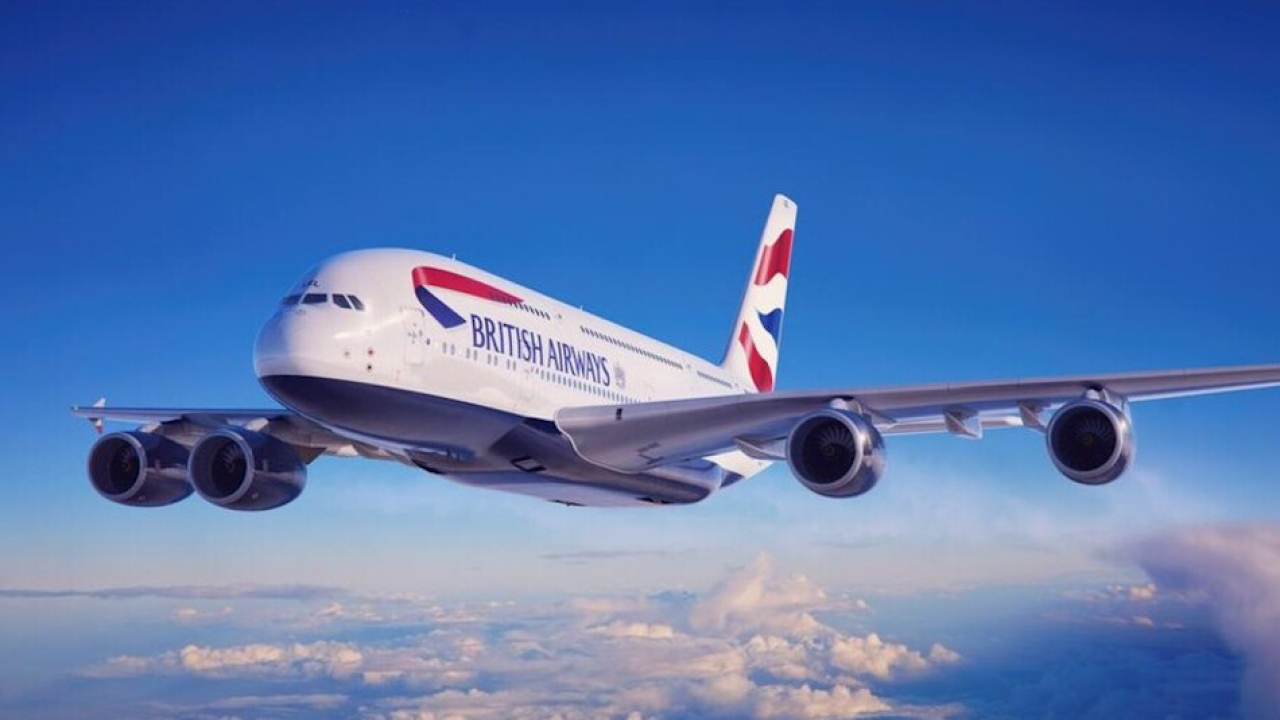Pegasus spreads its wings
In April, Güliz Öztürk became a member of a very select group of female airline CEOs. As she steers Turkish low-cost carrier, Pegasus Airlines, through the bumpy exit from the pandemic.

Güliz Öztürk: “Our aim is to become an international carrier with a wide network of international flights covering Europe, the Middle East, Africa, the Caucasus and Turkey.” Picture: Pegasus.
Running an airline is a difficult job – even in the good times. A surprisingly large number of airlines survived the pandemic but have been plunged straight into the highest inflation for several decades.
Among the most serious aspects of this inflation is the rise in the price of jet fuel, which typically makes up around 30% of an airline’s costs.
That is the position facing Güliz Öztürk, newly appointed CEO of Istanbul-based Pegasus. She took over the top position after her long-standing predecessor, Mehmet Nane, was appointed chairman of the International Air Transport Association (IATA) board of governors.
Öztürk’s priorities are simple: “My biggest goal is to move Pegasus’ success to the next level. Based on our current plans, our fleet size will exceed the 100 aircraft threshold in 2023 and continue to expand.
“Strengthened by this growth, our aim is to become an international carrier with a wide network of international flights covering Europe, the Middle East, Africa, the Caucasus and Turkey.”
A major factor behind this aim will be the continued renewal of the airline’s fleet, which is steadily switching from the Boeing 737-800 to members of the Airbus A320neo family under a 2012 order that, at the time, was the biggest ever placed by a Turkish carrier.
“By the end of 2022, 78% of our total seat capacity will consist of our new-generation aircraft. Our current plans foresee us taking delivery of 64 new aircraft between 2022 and 2025. By doing so, we anticipate that our total seat capacity will consist entirely of new-generation aircraft in 2025, as the older aircraft exit the fleet.”
This will allow the company’s network to continue to expand.
Capacity for 2022 is projected to be 5-10% above pre-pandemic levels, with passenger numbers close to those of 2019.
As of August 2022, the Pegasus fleet consisted of 23 Boeing 737-800s, 10 Airbus A320ceos, 46 A320neos and 16 A321neos. The airline added eight aircraft to its fleet in the year to August and that number will jump to 20 by year-end.
The A320neo family gives roughly 15% better fuel consumption than the 737-800s – a major benefit to the company’s balance sheet. Additionally, the larger number of seats in the A321neo means that unit costs, as well as fuel costs, drop significantly. Perhaps unsurprising, then, that the company intends to increase the number of A321neos to 73 by 2025.
“In 2019, Pegasus recorded the lowest cost of available seat kilometre (CASK) non-fuel figure across the industry. Back then, share of neo seats [in the fleet] was 40% and this ratio increased to 61% in 2021. However, the negative impact of Covid overshadowed the benefits of this increase. Going forward, we expect to see the efficiency gains kick-in again and become more and more visible.”
Although Pegasus has invested in the A321neo, there are currently no plans to acquire the longer-range A321neoLR or XLR models, with the carrier content to limit its sectors to a maximum of around six hours.
However, the CEO said the longer-legged models would be considered in future if the airline’s route strategy changed.
The good news is that, as with most regions of the world, tourism figures bounced back strongly over the summer as the pandemic waned and countries gradually dropped the restrictions and regulations that had made travelling such an infuriating process over the previous two years.
“Tourism figures returned to pre-pandemic levels this summer,” said Öztürk. “We had strong numbers for both the visiting friends and family (VFF) segment travelling to Turkey and on our transit routes.
“We believe that there is still great potential for further growth for Turkey’s tourism. Based on our analysis of forward bookings, our outlook for the winter season leisure traffic is very positive.
“In addition to the ‘winter sunshine’ offering of sun and beach destinations across our network, Turkish ski resorts also have great potential for interest from international tourists.
“While there is some reduction in domestic flight demand due to a squeeze on purchasing power, international demand for travel to Turkey is growing and we anticipate that this trend will continue.”
During the pandemic, frequent changes to government flight restrictions meant that passengers increasingly booked only a short time before they flew, to try to minimise the risks that flights would be cancelled, or that they would find themselves in a foreign country and have to rush home to avoid the imposition of new quarantine regulations.
That trend for last-minute bookings is continuing for both domestic and international flights, said Öztürk. Lots of late bookings make it difficult for airlines to predict passenger loads and Pegasus is trying to restore some semblance of normality to passengers’ booking habits.
“With the aim of normalising the booking trend moving forward, we are launching regular and widespread sales campaigns, especially for routes on our international network. Our bookings for the winter season are already at satisfactory levels and we expect them to increase further nearer the flight dates.”
Turkey’s geographic position, at the historic crossroads of Europe, the Middle East, and Asia, gives Pegasus a strong platform for international expansion in multiple directions. However, it is often forgotten by outsiders that the country’s population of around 84 million gave Turkish carriers a strong domestic market on which to fall back when international travel slumped during the pandemic.
Of the airline’s 125 destinations, around 25% are domestic, and there are still around 10 Turkish cities not served by Pegasus. As a result, the company sees room for growth in its domestic operations.
However, the airline is continuing its strategy of focusing on international network growth.
At present, Pegasus flies to 47 countries and is continuing its expansion in eastern Europe, the Middle East, north Africa, central Asia, and the Caucasus as its main focus regions. Some of the international routes added from Istanbul this year include Yerevan, Ganja, Sofia, Nur Sultan, and Helsinki.
Looking ahead, Pegasus plans to expand both north and south. Prior to the Russia-Ukraine conflict, both nations were on the airline’s target list. How those plans will change remains to be seen. However, Turkey remains a highly popular leisure destination for Russians, partly because of simpler visa requirements than for European Union nations.
The airline also aims to increase services to the Middle East, as well as to the CIS countries in central Asia, whose Turkic languages make Turkish carriers some of the most prominent operators in the region.
“Istanbul has a unique position connecting the CIS countries, Russia and the Middle East etc,” the CEO said. “We operate much more of a hub and spoke system than Ryanair or EasyJet, for example.”
Turkey’s proximity to the Middle East is important, as it allows Pegasus to take advantage of several major airports, such as Dubai International and Hamad International, that, unlike European counterparts that frequently have curfews, operate 24 hours a day. “We fly during the day to Europe and, during the night, the Middle East and CIS countries. That’s a strength in terms of utilisation of aircraft,” the CEO said. Pegasus’ fleet typically operates 14-hour days.
Pegasus’ main hub is Istanbul’s second airport, Sabiha Gökçen, with around 70 aircraft based there. However, the carrier is continuing to develop other major airports in Turkey, including Ankara, Izmir and Antalya, from which it has launched a number of new direct international services this year. These include flights from Izmir to Tbilisi and Skopje, from Doha to Trabzon, Antalya to Sofia and Ankara to Bucharest.
As well as opening up new routes, Pegasus is also increasing frequencies on existing sectors where there is demand, such as direct routes from Europe to Turkey’s summer destinations such as Izmir and Antalya.
Stay up to date
Subscribe to the free Times Aerospace newsletter and receive the latest content every week. We'll never share your email address.


